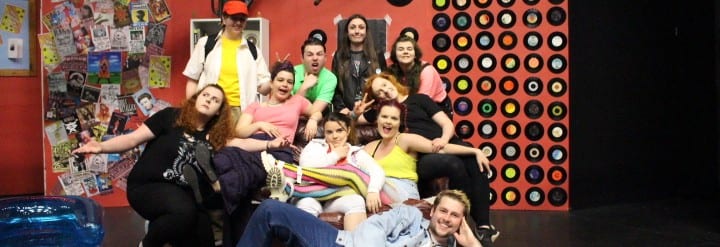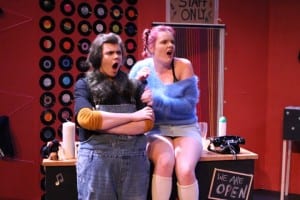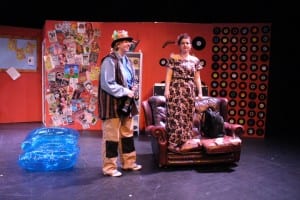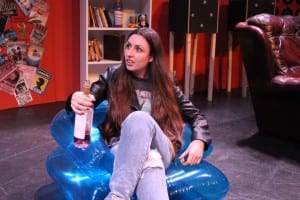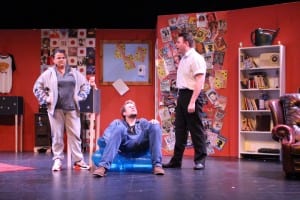Record ’97 was written very much as a collective, thanks to the experimentation and playing we did in the rehearsals before and during the writing process, somewhat akin to the method Timberlake Wertenbaker used to create Our Country’s Good: “The two weeks were set up to put a group of actors at the disposal of a writer to research any aspect of anything that might eventually relate to the play” (1996, viii). For Wertenbaker this was an opportunity to experiment with the world of The Playmaker, but for us it was an opportunity to take the characters and provide a stimulus for the actors to play with and generate material for the writers to go away and work on. For something as difficult to create as comedy can be this was the best approach and it allowed for a blending of humours presented by each member of the company. Whether it was something written that was brought in, or an improvisation activity based on a stimulus, the company was constantly receptive to what they were seeing. The company would either laugh at the joke and leave it as it is, or find a way of enhancing it, or even replacing it with something else entirely. Trial and error was a big part of creating the show and finding a balance in humour.
“He will rapidly discover if something he has written will work. If not, he and the artists can try out alternatives that will. Much rewriting can be done during rehearsals” (Stuart Griffiths, 1989, 106)
The separate comedic stylings of the cast also presented opportunities to create this absurd world, as some could be more exaggerated and weird than others in their performance, and yet the clash of styles added to the relationships and humour of the situation (Figure 1). The ability of the straight characters to look at the strange characters and acknowledge their absurdity made the absurdity that much funnier. There is something quite real to the characters exaggerated situations that the audience can empathise with, be it relationship struggles, or ambition, or concerns with finance and where to take their lives (Figure 2).
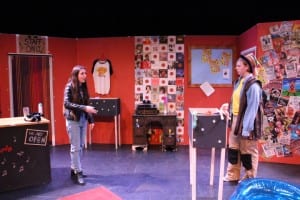
Figure 1: Daisy and Alex arguing. Daisy as the more down to Earth character clashes with Alex’s out of this world personality (Rebecca Noble, 2017)
We set out to create a comedy that explored this notion of nothing changing, and we achieved this through the story we created and the cast’s comedic ability. So much of the dialogue and humour came from spontaneous improvisations and approaches to delivery, and the ability of the cast to bounce off of each other to build upon the relationships of the characters and produce comedy from the situations. There was also a lot of humour that was created through the cast’s ability to invite the audience into the world of Record ’97 and let them in on the joke. An example would be the real world, post-1997 events involving the closure of Woolworths, the scandals involving Tony Blair, and the changes in culture (Figure 3).
The play was well received by the audience, which was very overwhelming and proof that the play was a success in the end, and that we as a collective had achieved what we had set out to do back when we had begun.
Works Cited:
Griffiths, S. (1989) How Plays Are Made. Oxford: Heinemann Educational Books Ltd.
Noble, R. (2017) Record ’97. [image] Lincoln Performing Arts Centre: Kick a Pigeon Theatre.
Wertenbaker, T. (1996) Timberlake Wertenbaker: Plays. London: Faber and Faber Limited.
